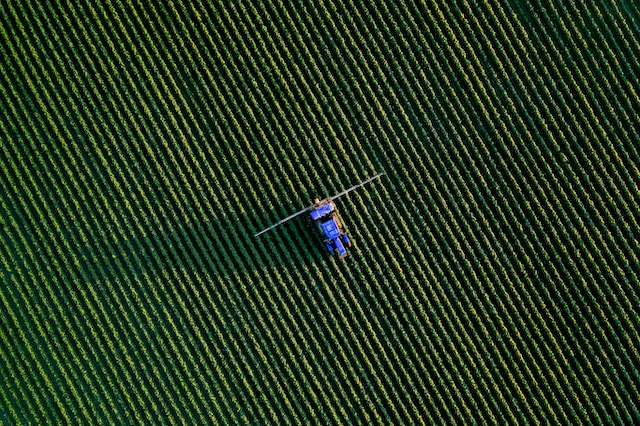In the continuously evolving landscape of global agriculture, one of the most exciting frontiers is the integration of robotics. This merger of technology and farming promises to reshape the industry, driving significant improvements in productivity, efficiency, and sustainability. More specifically, it aligns perfectly with the concept of green innovation – the idea of transforming traditional practices in ways that minimize environmental impact while maximizing output. This article will delve into the impact and application of robotics in the agriculture sector, examining how it revolutionizes crop and livestock management, reshapes market dynamics, and contributes to a more sustainable future.
Robotics is gradually transforming the face of agriculture, creating systems that can autonomously perform tasks traditionally carried out by humans or heavy machinery. The impact is wide-ranging, affecting aspects from crop management to livestock handling, and even market dynamics. But perhaps more importantly, this integration of robotics has considerable implications for sustainability in farming practices.
Also read: Best Robots that clean your house
Sustainability: The Cornerstone of Green Innovation
The term “green innovation” refers to new or significantly improved solutions that positively impact the environment. These solutions could be processes, products, or methods, but they all share a common goal: minimizing environmental degradation while maximizing productivity and efficiency.
The integration of robotics in agriculture aligns perfectly with this ethos. Not only does it enhance efficiency and productivity, but it also has the potential to drastically reduce environmental impact. Autonomous robots can accomplish tasks more accurately and consistently than human labor or larger machinery, minimizing waste, and reducing the use of resources like water, fertilizers, and pesticides.
Also read: Ways Technology Makes Us Smarter
Revolutionizing Crop Management
The application of robotics in crop management illustrates this green innovation perfectly. Drones equipped with imaging capabilities can perform surveillance of large agricultural areas, identifying problem areas or detecting early signs of disease or pests. This information can then guide ground-based robots to apply treatments selectively, minimizing pesticide use and helping to preserve the local ecosystem.
Similarly, autonomous robots can take on the role of precision planters, ensuring seeds are placed at optimum depths and spacing to maximize yield. This enhances efficiency by reducing seed waste and optimizing water usage. Moreover, such technology can enable around-the-clock operations, unhindered by the factors that limit human labor, such as fatigue or daylight hours.
Also read: Ways to Use Automation in Your Business
Transforming Livestock Management
Robotics isn’t just changing crop farming; it’s also making significant inroads into livestock management. Robots can handle repetitive tasks such as milking, feeding, and monitoring livestock. This increases efficiency and consistency, improving animal welfare, and releasing farm workers to focus on more complex tasks.
Automated milking systems, for instance, allow cows to be milked at their convenience, reducing stress and potentially improving milk yield. Meanwhile, robotics can monitor animal health, movement, and behavior, allowing for early detection and treatment of illnesses, thereby improving overall herd health.
Also read: Exploring Automated Gardening: How Do Robot Lawn Mowers Work?
Changing Market Dynamics
Beyond the fields and farms, the application of robotics is also impacting the market dynamics of the agriculture sector. With increased efficiency and reduced waste, products can be produced at a lower cost. Additionally, farms utilizing robotics may be better equipped to weather conditions such as labor shortages or supply chain disruptions.
Moreover, consumers are becoming increasingly conscious of the environmental impacts of their consumption habits. Farms that adopt green innovations like agricultural robotics can position themselves favorably in this shifting market landscape, appealing to consumers who value sustainable practices.
Also read: How Can a Robot Differentiate Between Positive or Negative Product Reviews?
The Road Ahead
It’s important to acknowledge that the transition to robotics in agriculture is not without its challenges. High initial costs, technological limitations, lack of skills, and regulatory hurdles are all obstacles that must be navigated. However, the potential benefits for sustainability, efficiency, and productivity are immense.
As we look to the future, the marriage of agriculture and robotics symbolizes the transformative power of green innovation. The impact is not only a redefined agriculture sector but also the potential for a more sustainable, efficient, and productive global food system. As we witness the dawn of this new agricultural revolution, one thing is clear: robotics will play an increasingly vital role in how we cultivate our lands, care for our livestock, and feed our growing world.
Also read: What is STEM Robotics?
Conclusion
As the demands on the global agricultural sector escalate, the application of robotics is emerging as a promising solution to sustainably meet these challenges. Green innovation in the form of agricultural robotics has the potential to significantly enhance productivity and efficiency, reduce waste, and drive more environmentally friendly farming practices. Although the road to widespread adoption may be fraught with challenges, the rewards – a more sustainable, efficient, and productive global food system – are worth striving for. The dawn of this new agricultural revolution signals not only the transformation of farming practices but also the promise of a future where technology and sustainability go hand in hand in feeding our growing world.

